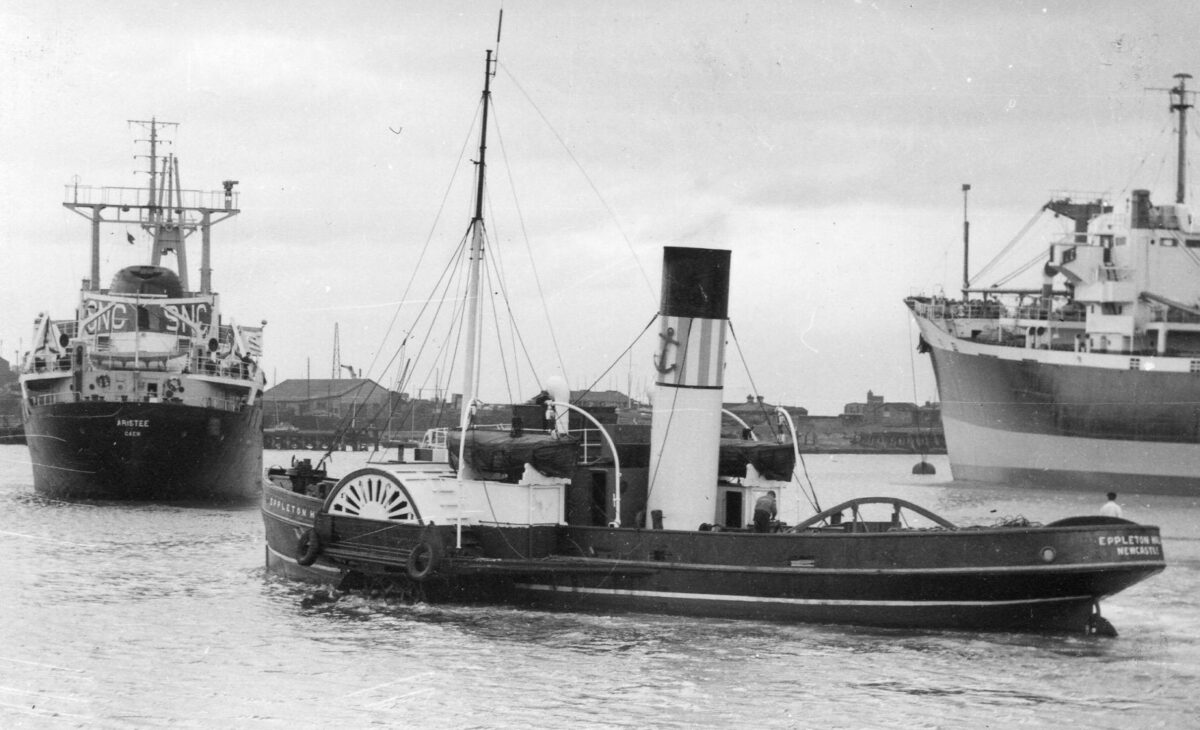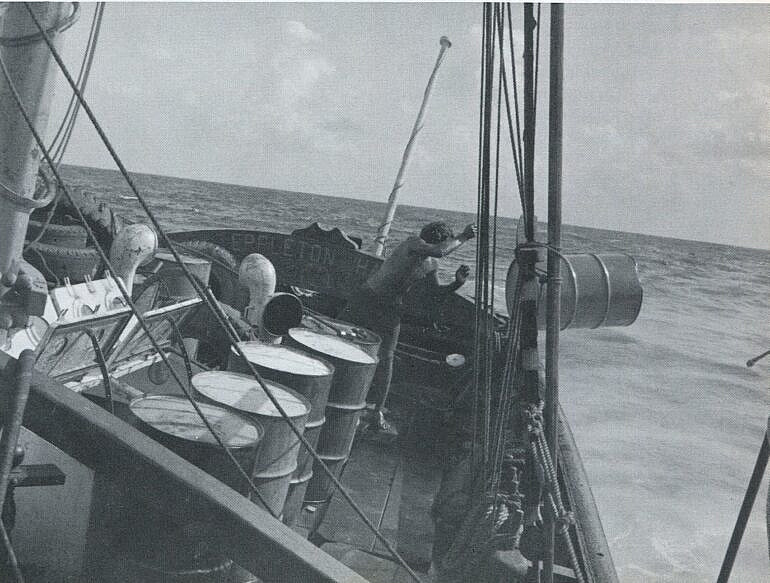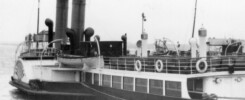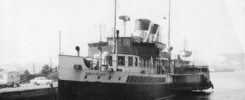
On Monday 24th November 1969, Eppleton Hall was on her first day out after leaving Mindello in the Cape Verde Islands on her voyage across the Atlantic to Georgetown Guyana. It did not go well. The starboard engine lost its vacuum.
For those who don’t know, paddle steamer engines won’t work without a vacuum. The purpose of it is to draw used steam out from the low pressure cylinder into the condenser to be cooled down into water once again before it is pumped back into the boiler. Some paddle steamer engines, like on KC, have an engine driven air pump to make the vacuum which therefore always pumps at the same speed as the engine rotates and therefore the speed at which steam is being used. Others, like Waverley, have a separate air pump with its own steam engine driver the speed of which has to be adjusted according to the rate of steam use.
If the vacuum is up around 24/25 ins Hg the engine will be powerful. Under 18 ins Hg the engine becomes sluggish. With no vacuum it won’t go at all. So on 24th November 1969 on Eppleton Hall there was nothing for it but to stop, take the air pump to bits and replace the diaphragms. This is a relatively straightforward job but it takes time to do, involves removing heavy parts from the engine and fixing it is reliant on having a suitable supply of replacement diaphragms available which I am pleased to say Eppleton Hall had.
The week in Mindello had been put to good use. The boiler had been cleaned out. Stores had been sourced and the conundrum of how to take sufficient fuel for a 2,000 nautical mile voyage across the Atlantic had been pontificated endlessly
One option considered was to ask the US Navy if they would like to help by providing a tanker as a training exercise, and as a publicity stunt, for Eppleton Hall mid Atlantic. This request was politely declined.
They knew that Eppleton Hall’s boiler had burned around 10 gallons of diesel oil per mile steamed so far They thought that by adjusting the burners and reducing her speed this might be got down to about 7 gallons per mile. So the ship’s bunker capacity of 10,000 gallons should therefore get them at least half way across the Atlantic. But what to do after that.
They thought over various options including towing a bunker barge astern of them. In the end they settled on bringing the extra capacity needed stowed in drums on deck and transferred into the ship’s own tanks as the fuel was used up. So this is what they did.
With 175 extra oil drums taking up pretty much all the available deck space Eppleton Hall flapped out of Mindello Harbour on 23rd November 1969 into the Atlantic distinctly lower in the water than her captain and crew might have preferred.

As she went along and burned the fuel from her own tanks during the crossing, they were topped up from the deck cargo. The empty drums were then slung overboard into Davy Jones’ locker.
To be continued.
Kingswear Castle returned to service in 2023 after the first part of a major rebuild which is designed to set her up for the next 25 years running on the River Dart. The Paddle Steamer Kingswear Castle Trust is now fund raising for the second phase of the rebuild. You can read more about the rebuilds and how you can help if you can here.
John Megoran
This article was first published on 24th November 2020.


